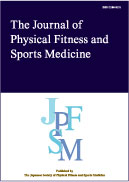Volume 3, Issue 5
Displaying 1-10 of 10 articles from this issue
- |<
- <
- 1
- >
- >|
Review Article
-
2014 Volume 3 Issue 5 Pages 467-476
Published: November 25, 2014
Released on J-STAGE: December 05, 2014
Download PDF (1632K) -
2014 Volume 3 Issue 5 Pages 477-482
Published: November 25, 2014
Released on J-STAGE: December 05, 2014
Download PDF (1163K) -
2014 Volume 3 Issue 5 Pages 483-491
Published: November 25, 2014
Released on J-STAGE: December 05, 2014
Download PDF (2910K) -
2014 Volume 3 Issue 5 Pages 493-500
Published: November 25, 2014
Released on J-STAGE: December 05, 2014
Download PDF (1202K)
Short Review Article
-
2014 Volume 3 Issue 5 Pages 501-505
Published: November 25, 2014
Released on J-STAGE: December 05, 2014
Download PDF (919K) -
2014 Volume 3 Issue 5 Pages 507-508
Published: November 25, 2014
Released on J-STAGE: December 05, 2014
Download PDF (917K) -
2014 Volume 3 Issue 5 Pages 509-513
Published: November 25, 2014
Released on J-STAGE: December 05, 2014
Download PDF (1036K)
Regular Article
-
2014 Volume 3 Issue 5 Pages 515-524
Published: November 25, 2014
Released on J-STAGE: December 05, 2014
Download PDF (1518K) -
2014 Volume 3 Issue 5 Pages 525-530
Published: November 25, 2014
Released on J-STAGE: December 05, 2014
Download PDF (2223K) -
2014 Volume 3 Issue 5 Pages 531-537
Published: November 25, 2014
Released on J-STAGE: December 05, 2014
Download PDF (1191K)
- |<
- <
- 1
- >
- >|
